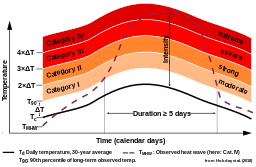The Ocean is Shattering Heat records. Here’s what that means for Fisheries.
Posted
Last Updated
Marine heatwaves can “inject a lot of chaos” as they remake ecosystems and cost coastal economies billions.
This story is part of Record High, a Grist series examining extreme heat and its impact on how — and where — we live.
Scientists first spotted the Blob in late 2013. The sprawling patch of unusually tepid water in the Gulf of Alaska grew, and grew some more, until it covered an area about the size of the continental United States. Over the course of two years, 1 million seabirds died, kelp forests withered, and sea lion pups got stranded.
But you could have easily missed it. A heat wave in the ocean is not like one on land. What happens on the 70 percent of the planet covered by saltwater is mostly out of sight. There’s no melting asphalt, no straining electrical grids, no sweating through shirts. Just a deep-red splotch on a scientist’s map telling everyone it’s hot out there, and perhaps a photo of birds washed up on a faraway beach to prove it.
Yet marine heat waves can “inject a lot of chaos,” said Chris Free, a fisheries scientist at the University of California, Santa Barbara. It’s not just gulls and sea snails that suffer. Some 100 million Pacific cod, commonly used in fish and chips, vanished in the Gulf of Alaska during the Blob. In British Columbia and the Pacific Northwest, salmon runs – and the fishing industry that depends on them – floundered. The acute warming also triggered a toxic algal bloom that disrupted the West Coast’s lucrative Dungeness crab business.

